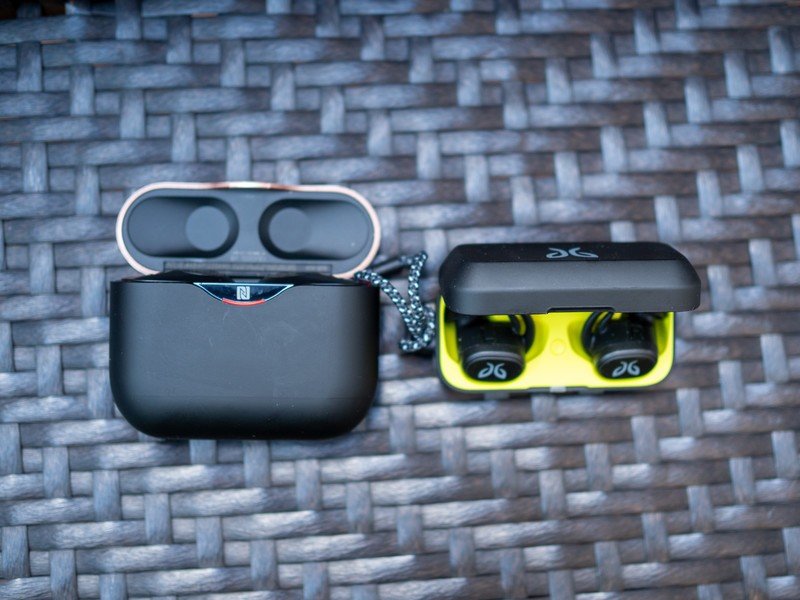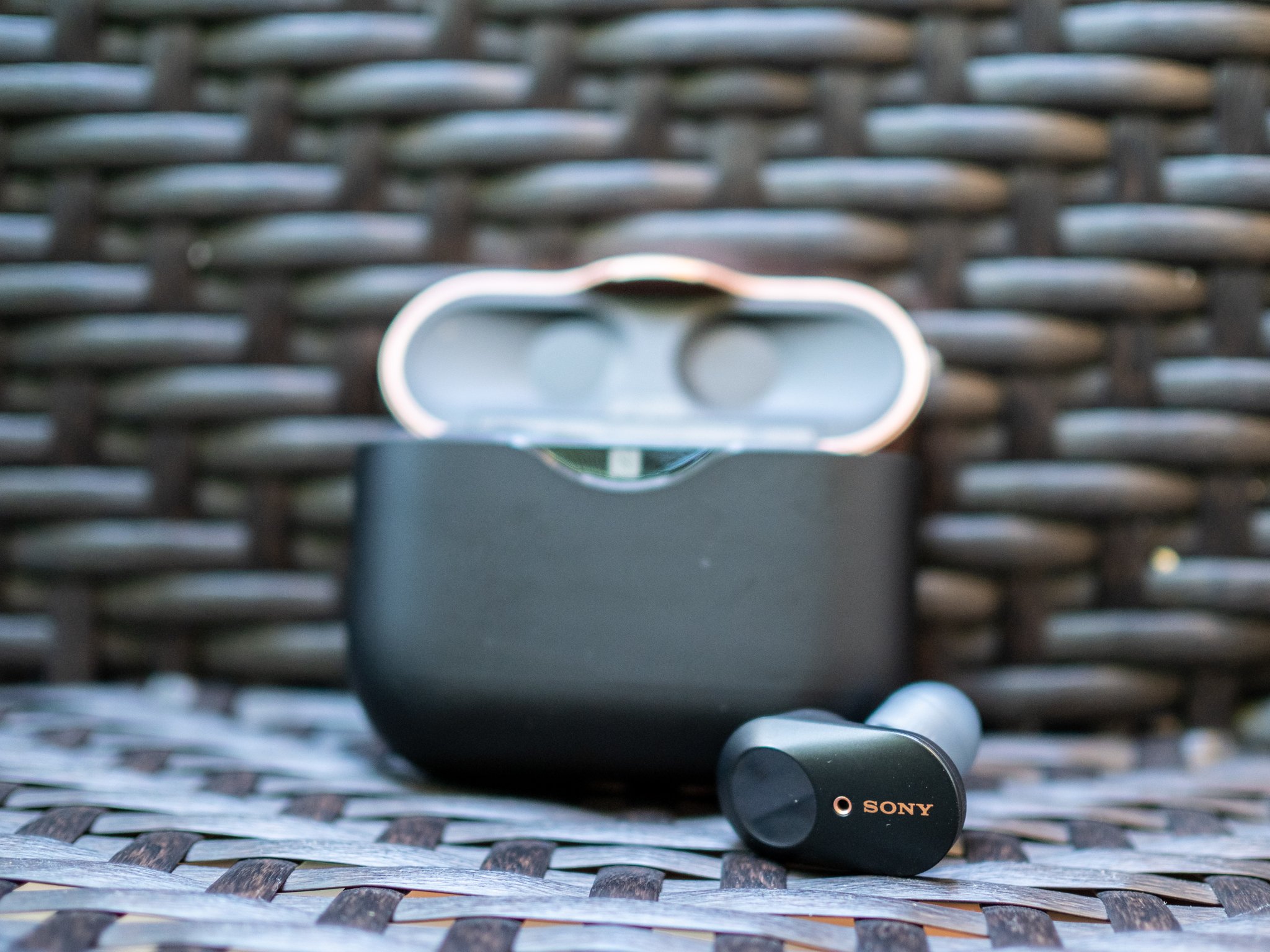I wouldn't say reviewing phones is easy, but there's a sameness to it. You unbox it, put your SIM it in, set it up, and start using it like the phone before it. You do some tests — call quality, photos, maybe a drop test if you're feeling bold — and you write about the experience. People read the review, one of likely many, and come to the conclusion that it's either for them or it isn't. Rinse, repeat.
Reviewing headphones isn't the same; you have to contend with so many variables. Head size, ear size and sensitivity. Then there's the purpose of the headphones themselves; are they for intense home listening — just you and the music — or for a clamorous daily commute? Do you intend to run with them? If so, they need to stay put during the strain of repetitive motion. Are you outdoors a lot? The headphones should probably stand up to more than a light rain shower. Wires? No wires? Headphone jack? USB-C? Over-ear? In-ear? True wireless? What's your budget? Do you care about sound quality or, given the lowish resolution of streaming media, is comfort more important?
It's important to keep this in mind as you read my thoughts on the WF-1000XM3s, Sony's latest true wireless earbuds. They're built on the same "platform" as the company's increasingly-popular and ubiquitous WH-1000XM3s, which means they deliver best-in-class active noise cancelation and a sound signature that's natural bass-forward and not particularly challenging.
But for $230, are they worth the added cost over similar-sounding Jabra Elite 65t's or the sportier, more portable Jaybird Vistas? The market is increasingly crowded by true wireless earbuds, but Sony has a winner here — if you can deal with the massive case.
Pros
- Rich, warm sound
- Noise cancellation is exceptional
- Comfortable fit (with the right seal)
- USB-C charging
- Awesome battery life
Cons
- Expensive for true wireless earbuds
- Carrying case is huge
- No water resistance
- Can be difficult to get a good seal
- Adaptive sound feature is useless
Sony WF-1000XM3 Design & Battery life
Unless you've rocking a pair of PowerBeats Pro, the WF-1000XM3's case is probably the biggest you've ever seen in a pair of true wireless earbuds. There are a few reasons for this, but it doesn't override the fact that it knocks their portability down a peg or two. The case holds an 18-hour charge and tops up through USB-C, and the copper-colored flat top swings open on a hinge to reveal the two earbuds inside.
The earbuds are also bigger than you'd typically expect from a pair of true wireless earbuds, but at 8 grams each, you don't really feel that added weight (by comparison, the comparatively tiny Galaxy Buds are still 5.6 grams). But Sony smartly distributed the weight throughout the back side of each bud, giving both gesture areas and additional space for microphones and sensors.


Unlike the true wireless earbuds you may have seen, the driver port is centered on the body, so when the bud is in the ear, a single turn locks it into place (provided you're wearing the correctly-sized gel tip).
This is one of the biggest true wireless earbud cases you'll see, but the huge battery almost justifies it.
Going back to the case for a moment, it's not something you'll want to fit into a pants pocket, but it's not so oversized as to negate its portability. Still, I know a lot of Galaxy Buds and Airpods owners who love carrying their case around in a pocket, both for easy recharging and as a holder in case one or both earbuds need to be removed. If you're without a jacket or bag, you may want to leave the case at home — provided you have enough juice to get where you're going and back.
Thankfully, if you do carry the case around you'll get a combined 24-hours of uptime — 6 hours from the earbuds and three separate charges with the case. A quick USB-C charge will get you from zero to full in 90 minutes, which is nice.


A couple of design quirks keep the bulbous case from getting a total pass in my books: the top is flat but the bottom isn't, so it's not possible to prop it face-up on a table. This is especially frustrating when I'm sitting at my desk and want to quickly replace the buds for a quick charge. Conversely, while the base has a lovely matte black finish, the top — the thing you'll spend a lot of time opening and closing on its hinge — feels cheap and flimsy, scratching all too easily even when treated gently.
(Yes, one could argue that the top is flat and the bottom rounded because you're going to place it on its top to charge it through the recessed USB-C port, but I maintain there's a better way in some designer's brain.)
Flipping open the case reveals an NFC tag that facilitates easy charging with an Android device, and the buds land in their respective sockets with a lovely strong magnetic thud that also prevents them from falling out when tipped upside down.
Sony WF-1000XM3 Sound Quality & Noise Cancelation

If you're buying these earbuds, you're probably either already familiar with Sony's over-the-ear WH-1000XM3s and their until-recently-unparalleled active noise cancelation, or you're looking for a pair of wireless earbuds that does a better job than smaller ones at blocking ambient sound.
Either way, the WF-1000XM3s employ the same aural rulebook as their larger counterpart, though they achieve different results. You don't get the bass-forward thump of over-the-ear headphones — the comparatively tiny drivers and smaller reservoir all but guarantee this — but there is plenty of oomph in these tiny dancers. It took me a bit of experimentation to find the right eartip size — you get two varieties and three sizes of each — but now it's a cinch to get a perfect fit ... most of the time.

But unlike some competitors like the Jaybird Vista, Galaxy Buds, or Jabra Elite 65t, there is no "fin" to hold the earbud in place once it's positioned. Instead, Sony relies on the sheer size of the bud, angled towards the ear canal, combined with the right correctly-sized tip, to form a lasting seal. The relatively stout nozzle means that the seal is a bit more precarious than on some other true wireless earbuds, so I often find myself having to readjust and reaffirm their placement.
What does this mean in practice? That I wouldn't recommend running with these things in unless you're comfortable adjusting them early and often. They also lack any water resistance rating, making that warning doubly important.
With ANC on, you won't have to ramp up the volume to hear details in loud environment, which saves your hearing and lets you enjoy the music more.
Still, when installed properly, the WF-1000XM3s sound great. They have active noise cancelation enabled by default, and use two microphones — one in the front, away from the ear, and the other facing the ear — to listen for and process out ambient noise.
The effect is incredible in environments with low but constant drones of noise — planes, buses, trains, coffee shops, etc. It also lets any music you're listening to come through more vividly than it otherwise would if you were listening in the same environment with different, passively-isolated earbuds.

The sound signature, like all of Sony's headphones, is bass-forward and just plain fun. Many other reviewers have said that these are the best-sounding true wireless earbuds they've ever heard, but I think that effect is achieved due to, not in spite of, the ANC. With ANC off, and all circumstances being equal, the XM3s sound pretty similar to the Jabra Elite 65t's, though with a bit more depth to the low-end. The soundstage is slightly wider, too, but not significantly more so as to be a significant step above.
I still prefer the sound coming out of Sennheiser's Momentum True Wireless earbuds, which provide much more detailed highs and more pleasing mids for vocals and instruments like guitars, but the difference isn't so stark that I'd recommend them over the WF-1000XM3s — especially since the Sony buds are $70 cheaper and offer active noise cancelation.
Sony WF-1000XM3 Smart features and other quirks

Sony put a lot of intelligence inside its latest true wireless earbuds, many of which I appreciate in day-to-day use. For example, they automatically pause when a single earbud is removed from the ear, resuming shortly thereafter in the remaining one. When both are removed but not replaced inside the case, they turn off to save battery.
One of the best parts of using them, and something I wish Sony's over-ear headphones did better, is how easily they switch between two devices — I can "pull" the Sonys from my phone to my laptop and back. The Bluetooth signal is rock solid, too — I've used these daily for a month and they've never succumbed to stuttering or disconnections, even in the signal-dense streets of Manhattan.

I'm a big fan of making calls using the WF-1000XM3s, too: the microphones are perfectly tuned for city living, and the ANC goes both ways, cutting the amount of noise the other person hears, as well.
Notably, and mercifully, these earbuds have no delay when watching video. That puts it ahead of many of its competitors, and something I wish other companies paid more attention to.
Missing, though, is support for high-fidelity codecs: while the XM3s support SBC and AAC, they lack the option to use Qualcomm's aptX or aptX HD compression algorithms and, even stranger, don't use Sony's own LDAC codec, which is built into Android itself.
Also lackluster is Sony's Adaptive Sound Control feature, which employs the earbuds' microphones to detect the amount of ambient noise and adjust the severity of the noise cancelation accordingly. After it thought a loud bus was the decibel equivalent of me sitting silently in my office, I disabled the feature and kept ANC turned on. Why mess with a good thing when you lose nothing by keeping it enabled?

Finally, the XM3s can be used to activate Google Assistant with a press-and-hold of one of the earbuds' capacitive sides. I thoroughly dislike how in your face Assistant's headphone integration is — it defaults to pinging in your ear for every notification, even if you choose not to have it read them aloud to you, and I haven't found a way to disable those tones without removing Assistant support from the headphones entirely.
Sony WF-1000XM3 Competition & should you buy them?

There isn't much competition in this particular category of true wireless earbud — ANC has typically been reserved for over-ear and some corded wireless earbuds, like Sony's popular WH-1000XM3s and Bose's awesome QC30 neckbuds, respectively.
As I referred to earlier, the WF-1000XM3s don't sound considerably better than some of its cheaper competition, but may appear to because its ANC blocks out additional sound so the music is more front and center. That's great. But if you don't need that active noise cancelation, and can fall back on "free" passive isolation, which the vast majority of true wireless earbuds provide, or require water resistance, or just don't want a massive case to lug around, there are better options in the category.

I'm a big fan of Jabra's Elite 65t's, though they're aged out and are due to be replaced. They're also cheaper, at around $150. Samsung's $130 Galaxy Buds are lightweight and tiny, and while they don't offer active noise cancelation, still sound great and offer plenty of smart features similar to Sony, all configurable through an app.
On the other end of the spectrum, Beats' new PowerBeats Pro have incredible sound and much better comfort, plus water and sweat resistance, for $250, or $20 more than the Sonys. I also love Jaybird's Vista earbuds, which are light and bassy and just disappear in your ears. Sennheiser's $300 Momentum True Wireless sound better than all of these, but have finicky touch controls and disappointing battery life.
Should you buy them? Yes!

I've grown to love the Sony WF-1000XM3s. Their sound is rich and warm and I love listening to music on it. I love the blanket of noise cancelation when walking around in the real world. But it's been a rainy summer here, and I despair every time I have to take them out of my ears in anything but perfect weather.
4 out of 5
The flaws are few, though, and don't overshadow the enormous benefits of having what amounts to a pair of over-the-ear headphones in a tiny form factor. If you look at them that way, as opposed to a huge pair of true wireless earbuds, it's easier to justify spending the $230 Sony's asking for these.
And I think you should.
Daniel Bader was a former Android Central Editor-in-Chief and Executive Editor for iMore and Windows Central.



